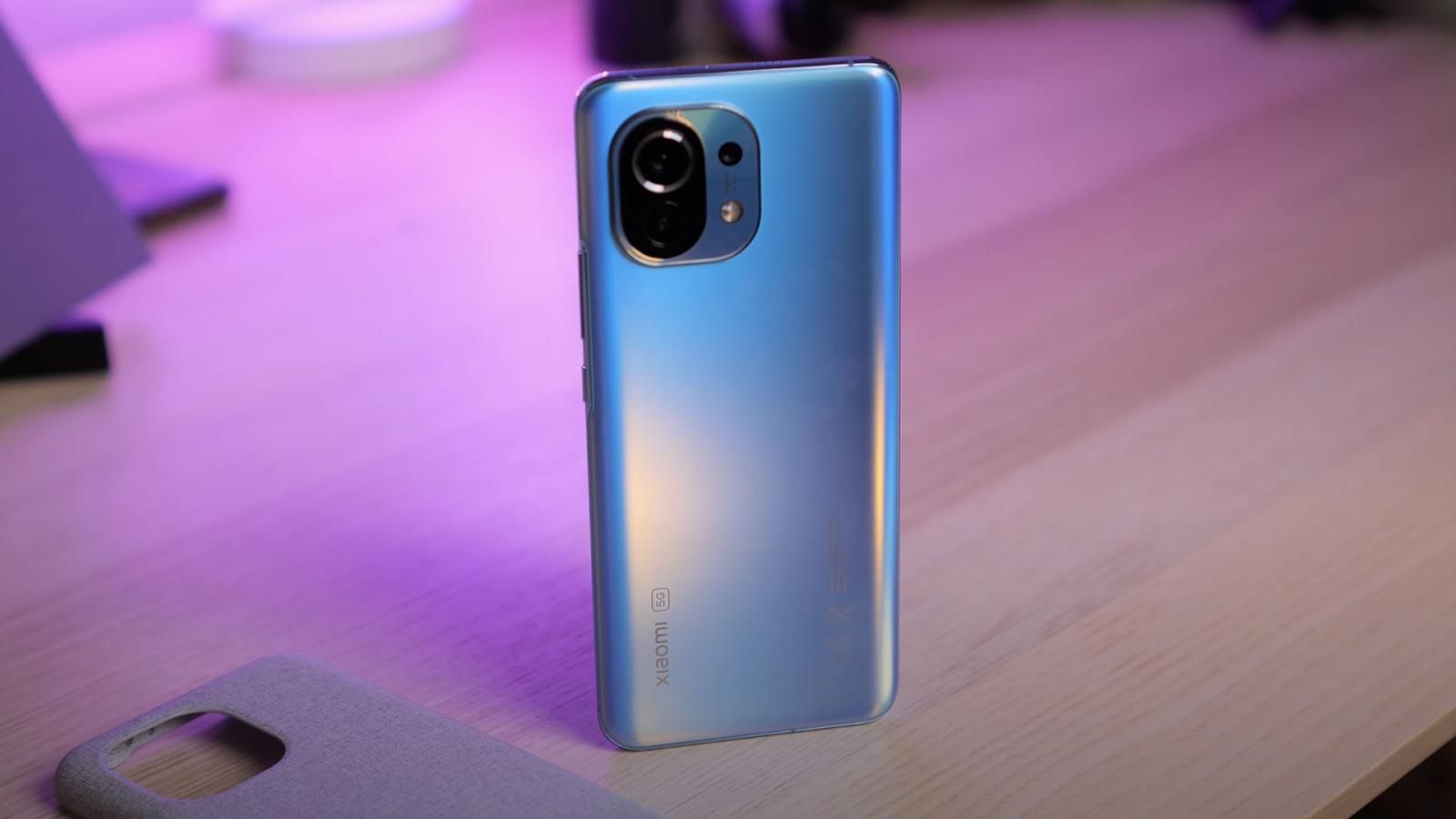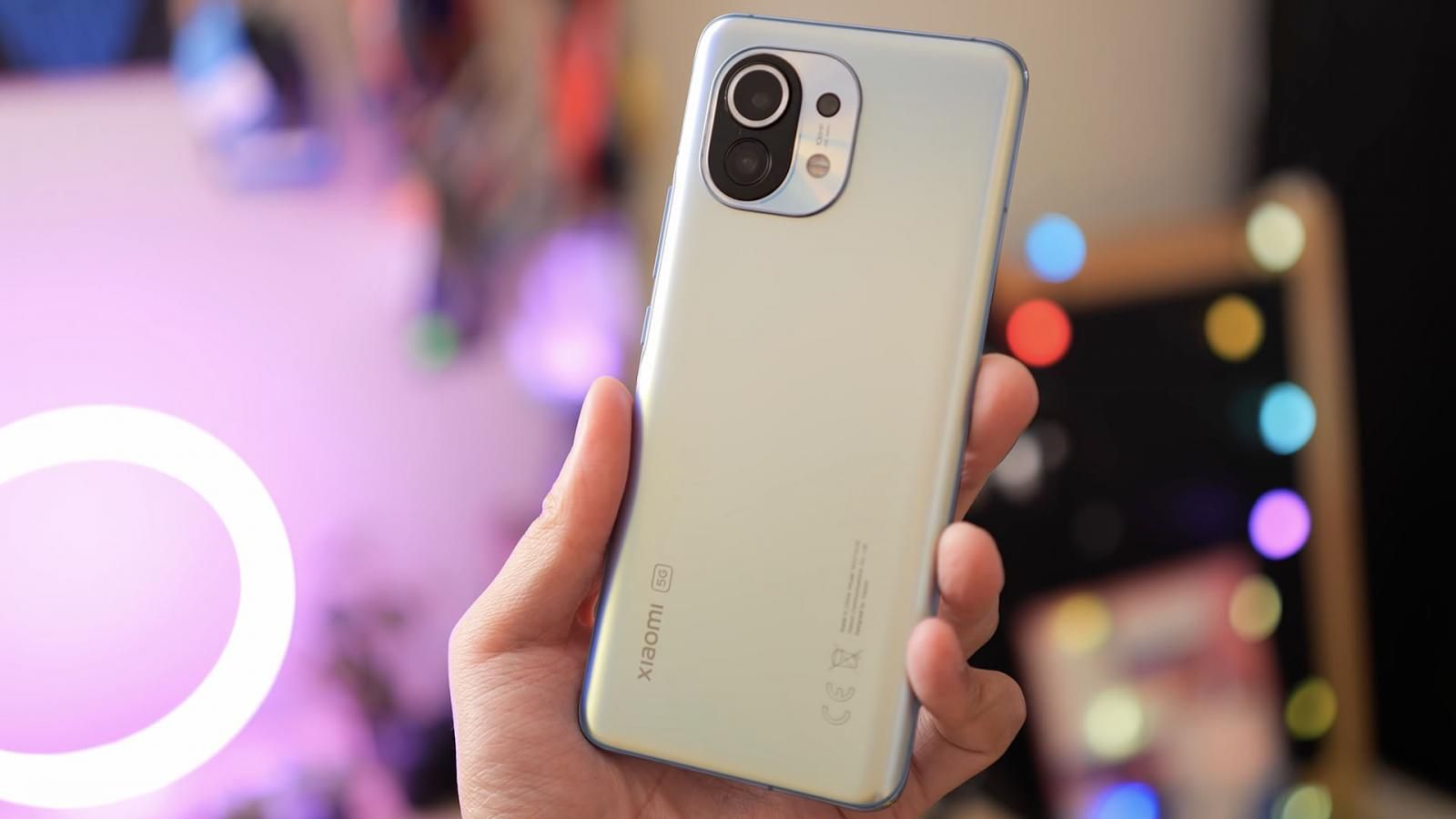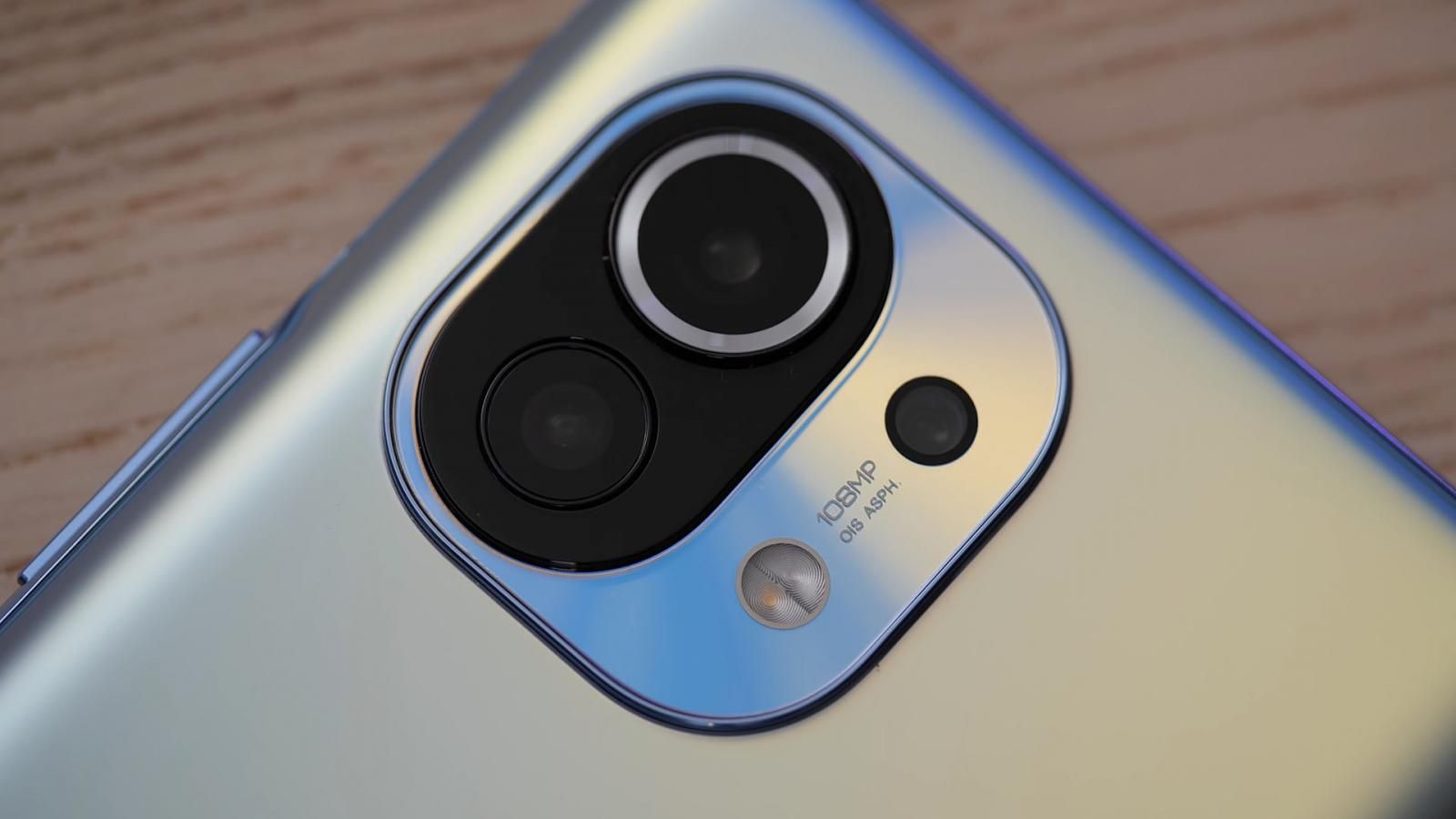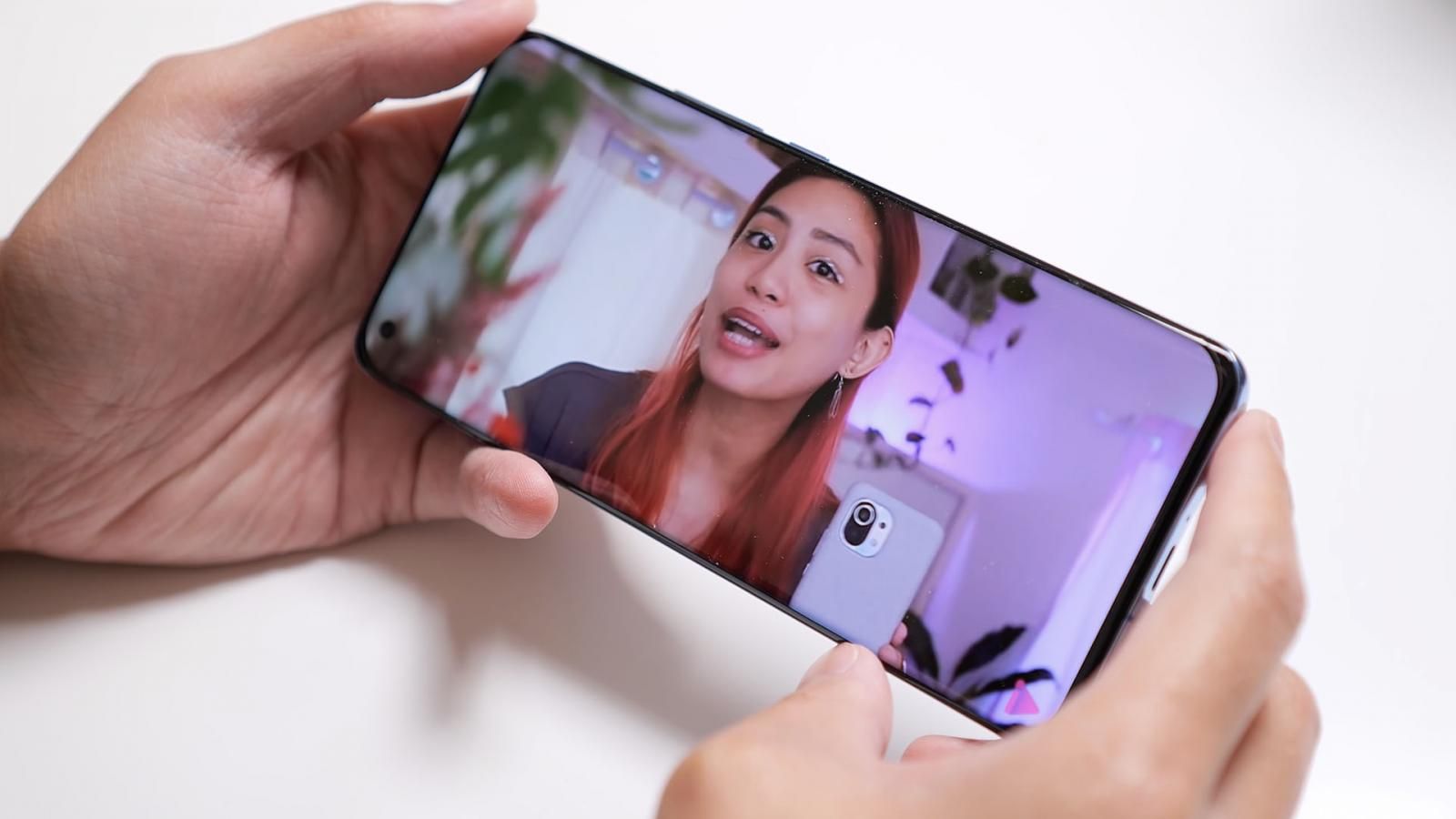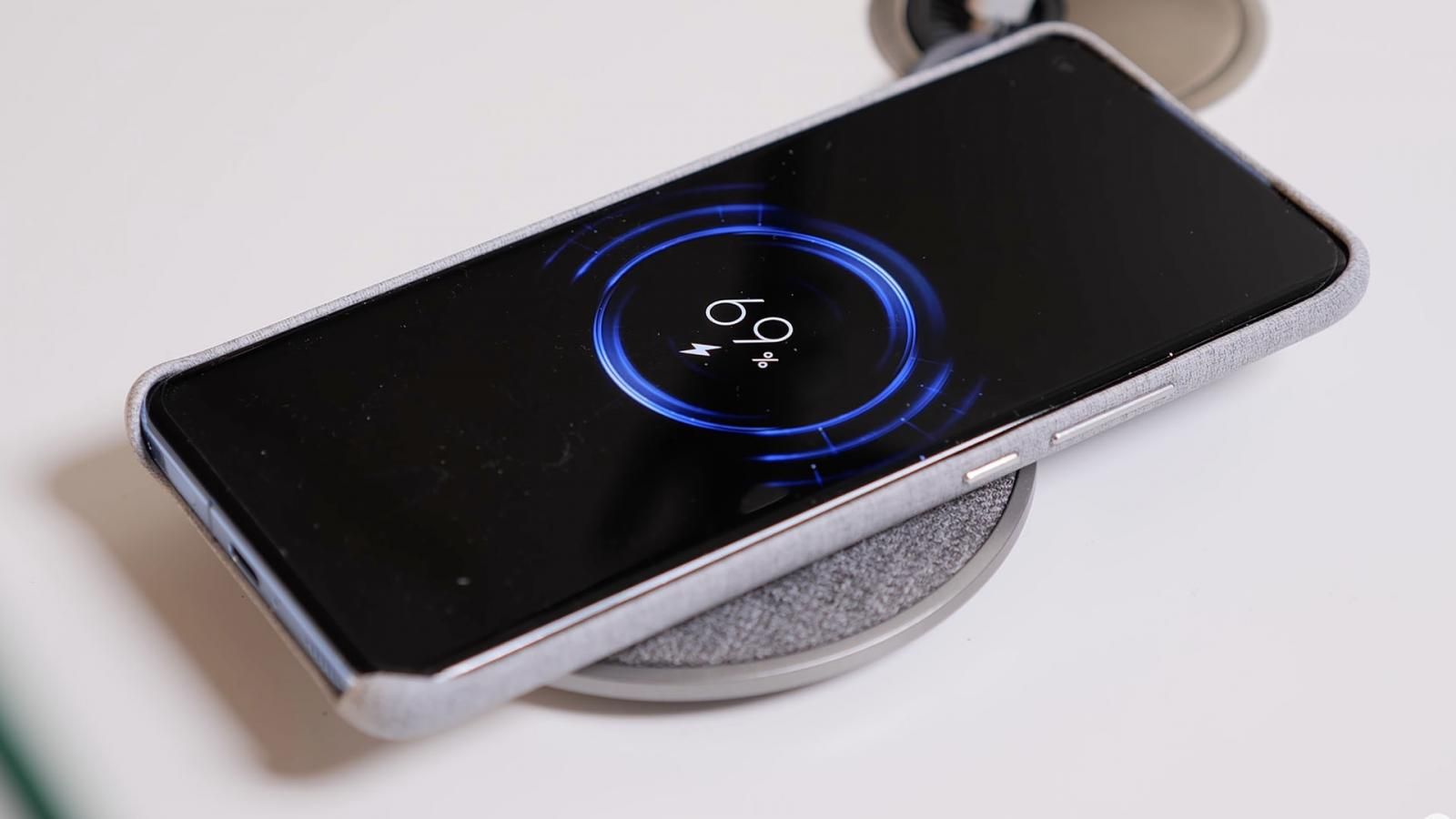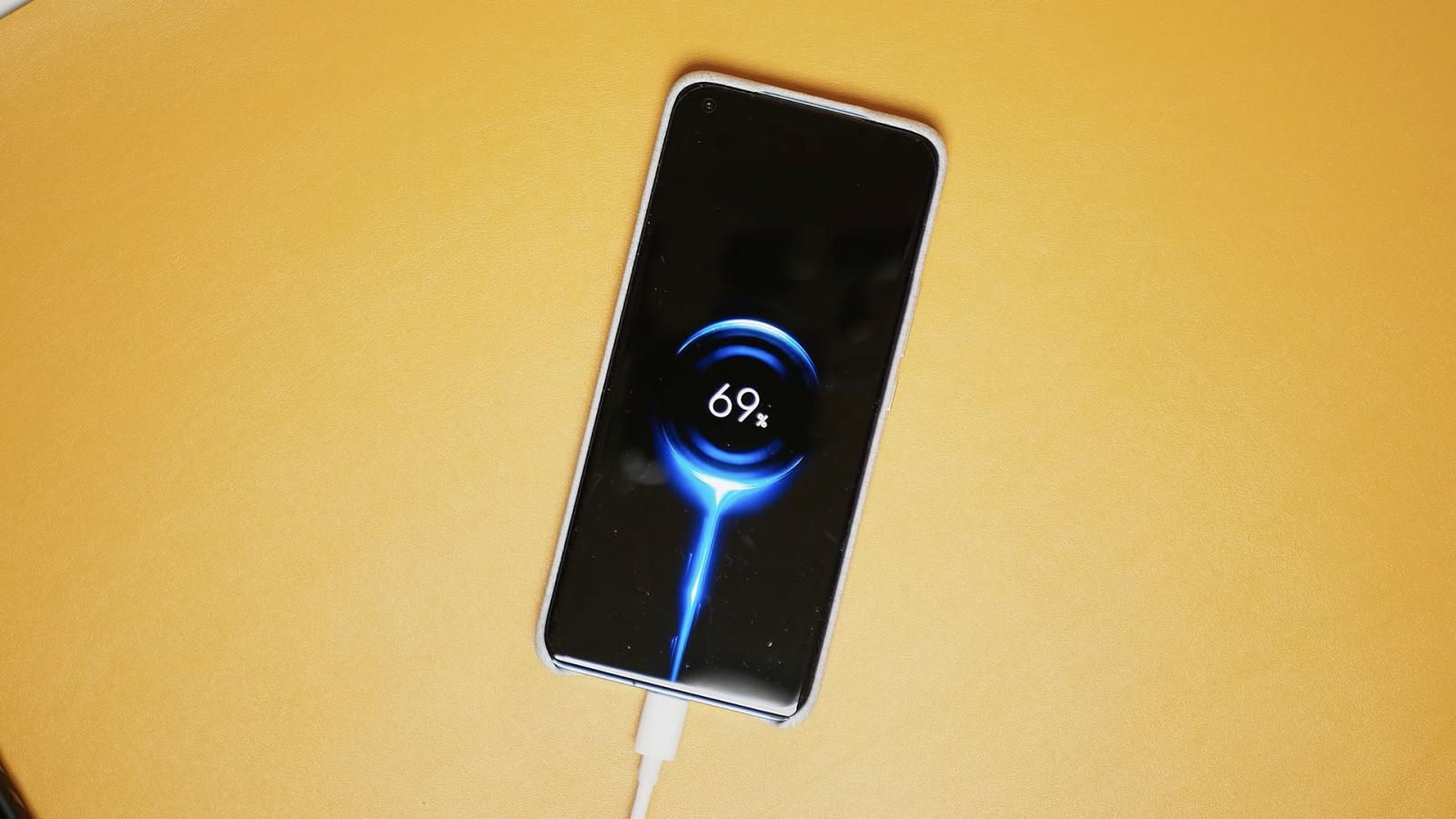Xiaomi continues to push their flagships with every new iteration, but now they’re trying to turn things up to 11. But will the experience do justice to the power within?
Shiny but svelte
If you follow Xiaomi flagship phones at all, you know that the company is not shy about trying new things when it comes to design. While the Mi 11 might not have radically different design cues this time around, it’s still impressive that the phone is quite thin and ergonomically pleasing despite the high power spec sheet. It all starts with a shiny and colorful backing — mine, in this Horizon Blue color, is the most unique of the three that available; and honestly, it’s always quite refreshing to get a phone color other than black or even white sometimes. The Horizon Blue has a great sheen to it that changes up depending on how the light hits the frosted backing — it’s still a little bit fingerprint prone, however, but it’s not as bad as most glossy phones that we’re all familiar with. In an unboxing I did over on my channel, I gave Xiaomi the typical points for including a clear case in the box but they also included a fabric case that I’m happy to use for both its look and grip. Curves on the back and the front help to give the phone a thin feel — I still seriously find this phone so balanced in the ratio of performance and ergonomics.
The next part that will catch one’s eye is the camera hump, which might seem like a bit of a departure from some recent flagship phones that try to put as many lenses on the back as possible. Xiaomi decided to put most of their effort into one great big sensor, the 108MP shooter that will pull multiple duties in the camera app. It’s clearly the focus, with the silver ring really making it stand out compared to the 13MP ultrawide lens and the smaller macro camera.
Turning it up to 11
Finally, we turn the phone around and find a high-performing display. Near the end of 2020, I finally got around to upgrading my TVs and computer monitors, learning about the trends across display technology. Higher refresh rates that average around 144hz, obviously up to 4K resolution, are something we can just expect from recommended products. Smartphones are keeping up in their own ways, with the Xiaomi Mi 11 providing one of those examples — this is a Quad HD resolution AMOLED display at 120hz, which I suspect to be a spec we hear a lot in upcoming flagship phones. And I’m here for it — MIUI already glides beautifully on this vivid screen because of the higher refresh rate, but I especially applaud the experience in media and games. Especially considering this Mi 11 isn’t trying all hard to have the biggest smartphone screen, I just come back, again, to the one-word descriptor I’d use to describe this phone: balanced. Delightfully balanced, really.
And all the games and media just fly on this phone because of the top-tier specifications we’re able to enjoy right now. The Snapdragon 888 brings the fire, 12GB of RAM in the top-level model keeps it burning, and the 256GB of storage gives enough room for all the kindling. The spec sheet is simply impressive, if not completely outside the realm of what we expect from a 2021 flagship. A lack of a headphone jack is kind of a cliche at this point, the in-display fingerprint reader is a reliable performer, and for the few of you who are always curious, there is indeed an infrared blaster on here that is used with the Mi Remote app.
And then there are the power specs, which continue my whole theme of this device being surprisingly skinny. The 4600mAh battery isn’t the biggest we’ve seen in terms of capacity, but it’s never given me anxiety before the end of my days. In fact, it’s been able to survive the following mornings up until lunch most of the time. But what would a Xiaomi smartphone be without some crazy fast charging? If you opt-in for the accessories in the box — which, by the way, doesn’t increase the retail price — the included charger is a 55W powerhouse that gets the battery topped up in a real hurry. Fast charging is just a great luxury — I’ve had plenty of instances where I’m about to get ready to leave the house and just to make sure I’m all good to go, I plug the Mi 11 in while I’m showering or something. The convenience of 55W wired charging might start to influence wireless charging, though, as this phone is capable of 50W fast wireless charging — if you have a compatible Xiaomi wireless charger, of course. I don’t have that, but I do have wireless chargers in both my work areas so this phone just sits there keeping a full charge, no problem.
Me, myself, and MIUI
All of this power would be for naught if the software wasn’t able to put it to good use. And over the years, the user forum-driven MIUI has undergone evolution after evolution, continuing to be a big contender in the Android software market. The thing is, MIUI is also one hell of a melting pot, constantly stirring up dope features with sometimes spotty polish and certain quirks some users can’t look past. On the surface, it’s a highly customizable UI, sporting a robust app drawer, an intuitively segmented settings screen, and special features that you do have to dig a little for. Of those special features, I’m a fan of the Game Turbo layer that automatically optimizes games and hides multiple features behind an unobtrusive menu. Customization options abound in the theme marketplace where you can find tons of wallpapers and ringtones, though I will admit that it’s nice to see MIUI just default to Google Now as the extra home screen.
Where things get a little overdone is in all of the ways MIUI treats its canvas like a service — it’s well known by now that there are ads in certain parts of the interface; for example, when you install an application from the Play Store, a security layer pops up just before giving you the confirmation, but that’s a place where an ad can come up. Folders that you create have a toggle for suggested applications that will push apps into said folder, which is like, okay, I made this folder to be minimalistic, so no. Of course, all of these things can be turned off, and for most of you using the Mi 11, that extra step of turning it off might be a worthwhile endeavor. But it’s not like my Mi 11 needed to suggest many new applications because it seems most of them were preinstalled. You might notice the blue dots under certain games and utilities — I have never touched those apps which came pre-installed. I mean, why would I want to play a generic Bubble Shooter when I can have Dragon Quest 8?! Bloatware usually doesn’t bother me because I can just remove most of the apps. But the amount of them I saw in my app drawer upon first using the Mi 11 definitely surprised me.
Putting it all in motion
So Xiaomi continues their habit of throwing everything at the wall and seeing what sticks. The same goes for the camera, where the software is up there in terms of feature saturation. Let’s focus on the fundamentals first — the 108MP main sensor is the one that the software will use the most, while the 13MP ultrawide and 5MP macro are there if you need them. To their credit, they perform just fine in both pictures and video — yes, I’m including the macro lens in this statement. While any zoom levels above 2 or 3x will start to show diminishing returns on quality because there’s no optical zoom on this phone, I didn’t find myself missing telescopic abilities while shooting. With measured expectations, the ‘nice-to-have’ utility of the extra lenses can be considered a win. Unfortunately, Xiaomi puts the same energy into their front-facing camera, which is a 20MP shooter capable of some good photos but doesn’t shooter higher than 1080p resolution. Some filters and HDR-capable video capture soften the blow a little, but I still find myself wanting more from the front shooter.
Because after all, we’re living in the age of social media, and many of the modes and features that Xiaomi puts in their phones can help with making those creative, snackable pieces of content. There’s a lot to choose from, from a VLOG mode that puts guided clips together into a highlight reel to the Clone mode to the Dual Video mode. But the Mi 11 introduces Movie Effects, which are software recreations of creative filmmaking techniques. The slow shutter is self-explanatory in a low-light situation because that’s when you’d need a slower shutter speed to expose the scene well enough. Night time-lapse is a time-lapse version of the same idea. Parallel world is a trippy mirror framing that says you should use a tripod but you can get some trippy results handheld. And Magic Zoom is when a shooter zooms into a subject while physically moving backward. My problem with the Magic Zoom, in particular, is that it requires a far distance away to have anything in focus, kind of eliminating many situations where you’d want to use such an effect. That, in a nutshell, is how I feel about the different modes Xiaomi throws in — on the one hand, they’re unevenly tuned and sometimes too rigid in their use case scenarios; on the other hand, they’re all relegated to lower quality capture so if you’re a serious content creator that wants some fun new tools, they’re not the quality you might hope for. And finally, most of these modes aren’t really made for solo shooters — you usually need someone else to film or to film you.
You’d think that such a powerful main sensor would be able to throw higher resolution power behind all of these modes, but that’s not the case. It’s a shame because the 108MP sensor is fantastic in all of the right fundamental ways — in good lighting, both photos and videos come out sharp, vivid, and highly pleasing. Some fun little features can be activated during general recording like a Movie Frame mode that immediately gives footage a cinematic look. If you take this as a straight-up camera system, you get great quality results — it’s when you get deeper into the software additions that the inverse proportions appear: fun goes up, but quality takes a hit. I’m not saying this makes the Mi 11 a bad camera system — on the contrary, I’d say this is one of the better performers on a fundamental level. It’s just that the Mi 11 continues to confirm for me that higher quality capture, whether you measure that in megapixels or as 4K, is still more a mode in and of itself rather than a setting you can toggle in every other mode. Hopefully, we’ll see those lines blur more and more, as I expect a company like Xiaomi to attempt doing.
Only the beginning
I mean, this is only the beginning of what we’re seeing in the Mi 11 — both because smartphones are always trudging forward, but also because Xiaomi themselves have more up their sleeves. The Mi 11 is probably the entry-level of an entire line and compared to what we might see in a Pro model, this is so far a great head start. Not to mention leaks of the insane-looking Mi 11 Ultra that literally has a second screen on the back so that you can use the main sensors for your selfies and talking heads. That’s what I’m talking about. But if you’re just looking at the Mi 11 as your next phone, it’s probably because the price is lower than most flagships — at around $700 and up depending on your configuration, Xiaomi continues their tradition of pricing down all of the raw specs and power that would normally ask more of your wallet. And in that sense, the Xiaomi Mi 11 is a win — but I think it’s just the beginning and I can’t wait to see what comes next.

